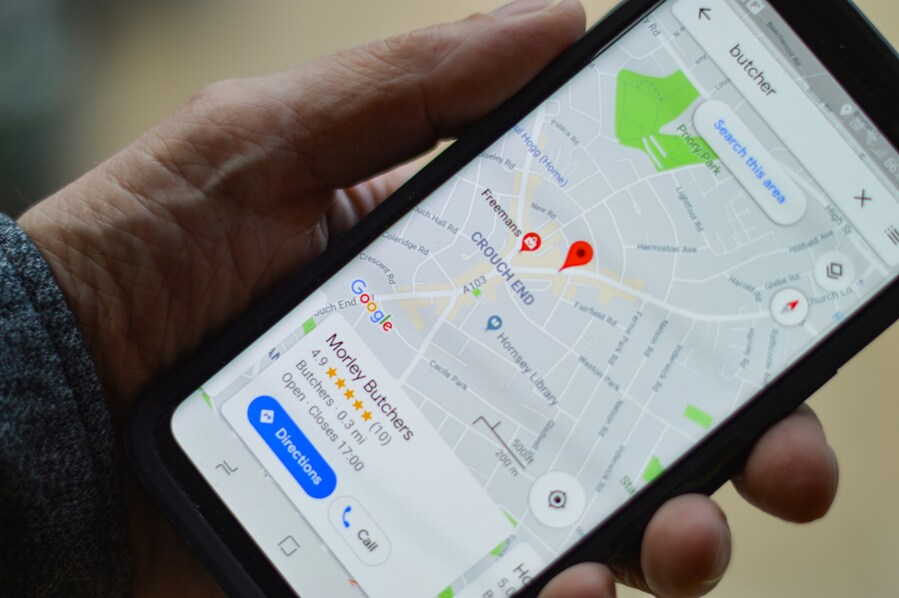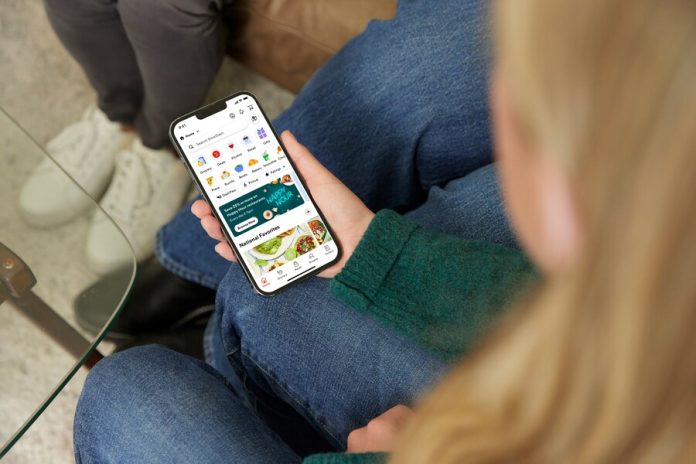Location-based services (LBS) are transforming how businesses operate by using location data to enhance personalization, efficiency, and customer engagement. They combine various technologies and information to provide targeted output to users based on their geographic location in real-time.
The LBS industry is growing and profitable. According to a report generated by Astute Analytica, the global location-based services market reached a revenue of $65.79 billion in 2023. The industry is forecasted to generate $462.65 billion in revenue by 2032 at a CAGR of 24.2 percent within 2024-2032.
As smartphone use becomes more ubiquitous, the technology has numerous applications. Here, we explore the various uses of LBS, their crucial role in business growth, and how they create a competitive advantage for companies in various sectors.
The Role of Location-Based Services in Modern Business
Modern businesses increasingly depend on location-based services (LBS) to reach and assist customers. LBS-enabled features play a crucial role in today’s business models, designs, and strategies by providing precise location data to improve operations in many applications.
The market for global location-based services is projected to grow from $31.17 billion in 2024 to $129.71 billion by 2032 at a CAGR of 19.5 percent. This growth rate comes as no surprise. Eighty percent of smartphone users already utilize LBS, potentially driving the total market to $463.89 billion by 2030. The constancy of demand is further supported by the fact that 74 percent of smartphone users worldwide use LBS weekly.
As consumers show an unquenchable thirst for all things LBS, it increasingly underpins many online activities, compelling businesses to boost their capabilities. Let’s examine the technology’s primary applications and how they improve businesses’ operational efficiency while enhancing customer experience.
Enhancing Customer Experiences
LBS enhances the personalization of online customer experiences. It also improves brand relevance and engagement by helping target ads, social media posts, and online campaigns. Furthermore, it promotes user convenience by offering real-time support.

Personalization
Users benefit from increased personalization of their online experiences. LBS harnesses location data to provide personalized offers and recommendations to customers.
For example, a coffee brand like Starbucks can use LBS to send customized offers to customers when they show up near a Starbucks location. This subtle nudge may increase the likelihood of a customer’s visit and subsequent purchase of their favorite product.
Businesses can implement geo-targeted marketing campaigns designed to capture customers based on their location to take advantage of the personalization edge provided by LBS. Matching promotions to customer proximity can help drive them to a physical store.
Boosting consumer engagement
LBS can implement geofencing to send targeted notifications to users based on their proximity to a business location. Like personalization strategies, consumer engagement utilizes geofencing-triggered notifications to draw customers to events and sales, increasing foot traffic.
Businesses can use this feature to push time-sensitive promotions while increasing customer interaction at relevant times. Geofencing technology can also alert customers about nearby limited-time offers, sales, discounts, and other in-store activities to make them feel welcome and engaged with an establishment.
Improved customer convenience
Businesses are always looking for that customer service hack. The more intelligent a system is, the better it can detect a customer’s needs. With LBS, companies can use location tracking to offer real-time assistance and support.
These services are crucial to ride-hailing businesses like Uber. Ride-hailing apps use real-time location tracking to provide users with accurate ETAs and driver locations.
By incorporating real-time location into a mobile app, companies can become more responsive and compassionate towards customer needs. They can provide crucial assistance with immediacy and accuracy.
Optimizing Logistics and Inventory Management
Operational efficiency is critical in large-scale logistics operations. Transport and delivery services depend heavily on LBS to save costs and speed up fulfillment. Product-based businesses and e-commerce enterprises need extensive management systems to manage inventory and optimize operations. LBS is also crucial to managing supply chains and helping monitor assets in transit.
Efficient routing
LBS can significantly optimize delivery routes, reducing fuel costs and improving delivery times. For example, FedEx uses an elaborate LBS-enabled system to manage its routes and supply chain.
Using advanced tracking technologies, it collects real-time data on the status, location, and condition of packages. It also uses LBS to optimize delivery routes, reduce transport and fuel costs, and reduce delivery times. The data is constantly assessed to identify inefficiencies and opportunities for improvement.
Businesses can adapt this practice by implementing route optimization software to improve delivery performance, reduce operational costs, and increase customer satisfaction.
Inventory tracking
Real-time location tracking of inventory can help businesses monitor stock levels accurately, reducing the risk of stockouts and overstocking. Walmart uses LBS and RFID technology to track its massive inventory, ensuring its store shelves are well-stocked.
RFID is specifically applied to improve store-level inventory accuracy in electronics and home goods categories. It enhances supply chain visibility. The system promptly identifies and addresses out-of-stock instances, optimizes inventory levels to match customer demand, and reduces overstocking, leading to cost savings. It also reduces shrinkage by improving the accuracy of inventory counts. Coupled with LBS, it saves the giant chain millions.
Companies can implement a similar system, using RFID tags and LBS, to ensure accurate inventory monitoring. Moreover, they can add an automated restocking system to ensure optimal efficiency.
Supply chain management
LBS enhances supply chain visibility by tracking shipments and assets in transit. This capability ensures timely delivery and reduces the risk of lost or delayed shipments.
Location-based services also help strengthen the supply chain in several ways.
First, it prevents theft. Cargo theft takes a $50 billion toll on the transportation industry yearly. Location-based services have produced countless success stories in recovering stolen goods or lost items. LBS enables cargo monitoring solutions, informing you of the location of cargo in real time.
It also helps confirm the condition of the goods being shipped. Fleet managers can warn when food gets too hot before the entire shipment gets destroyed. LBS provides the necessary evidence to aid in its pursuit of stolen cargo.
Second, LBS works with the Internet of Things (IoT) to collect and upload real-time cargo data. IoT can cover several variables. Smart monitors can simultaneously collect temperature, speed, location, and route data.
This information can assist decision-makers in making necessary calls on the go. This process is called rapid forecasting. LBS and IoT work together to improve forecasting. Though not an exact science, it’s the closest you can get to concrete and actionable data about connected devices. Rapid forecasting helps companies allocate resources and secure seamless productivity.
Third, LBS uses IoT to monitor warehousing, the heart of the supply chain. Sensors in warehouses can locate items and track them during picking and packing. Company managers and decision-makers can gain insight into the volume processed in real time or within a certain period.
Paired with smart shelving, LBS helps the company keep a real-time hold on its inventory by constantly transmitting data on its shelved products.
Fourth, LBS is relevant in the last-mile delivery process. Speed is an essential factor in this aspect of e-commerce. By reaching consumers quickly, companies increase consumer confidence and trust.
However, as last-mile delivery breakdowns are common, e-commerce companies need a technology boost.
By using LBS and IoT to enable the smooth delivery of goods, companies can troubleshoot the last leg of the journey. The insights also help companies provide confident answers and greater transparency, delighting their customers.
Essential Tools To Enable Location-Based Services
Developers can utilize various tools and technologies to help systems and apps effectively use LBS.
Radar’s Address Autocomplete API: Easier than Google Maps
Address autocomplete APIs integrate with various platforms and programming languages. They enable developers to incorporate features into their apps.
Radar’s Address Autocomplete API is easy to use and offers a generous free plan. It is a third-party service with an extensive geographic location database and commonly used addresses. The API also uses various algorithms to predict and suggest addresses based on customer or user input. In other words, it provides a “type ahead” address prediction service.
Developers love Radar’s product because it is much easier to integrate than Google Maps. It is also highly reliable, with an average uptime of 99.99 percent.
Moreover, it has global coverage, is enterprise-ready, and is up to 90% less expensive.

Using this tool, businesses can implement LBS to ensure accurate address inputs to improve the delivery of products and services. The high level of precision in these systems also helps reduce errors.
Integrating it into your company’s checkout flow can accelerate address entry. The API integration also reduces checkout friction. After you obtain the address from your autocomplete API, you can use a geocoding API to determine the user address’s precise latitude and longitude position.
You can then display a map with a movable pin to confirm the customer’s desired delivery or drop-off location. This process and design benefits users. They can visualize and fine-tune the drop-off location.
Other Notable LBS Tools
HERE Technologies offers robust location data solutions for logistics and supply chain optimization. They cater to logistics companies to help them improve their delivery efficiency and optimize route planning.
The company also works with medical equipment giants to provide end-to-end visibility solutions to inbound and outbound supply chains, ensuring that hospitals and technicians get real-time information on valuable medical parts.
Foursquare is also a formidable contender in the industry. It specializes in providing location intelligence and foot traffic analysis for retail and marketing insights. Top retailers use Foursquare to analyze foot traffic patterns and optimize store locations. You can also use Foursquare to find or list a business.
Businesses can use Foursquare’s location intelligence to gain insight into customer behavior and optimize marketing strategies.
Location-Based Services Can Transform Your Business Model
Location-based services confer significant benefits across various industries, enhancing personalization, efficiency, and customer engagement. LBS can also revolutionize business models, creating features that help businesses scale, reduce costs, and compete in larger markets. Through LBS, businesses thrive based on the ability to locate and address customer needs more effectively.
LBS-enabled businesses are dominating the global market in every industry. Hence, those using LBS tools like Radar’s Address Autocomplete API can gain a competitive edge. As smartphone use increases and wireless services become faster and more efficient, the role of LBS in the customer experience becomes indispensable.
Companies can unlock new growth and operational excellence opportunities by adopting innovative LBS solutions.





































